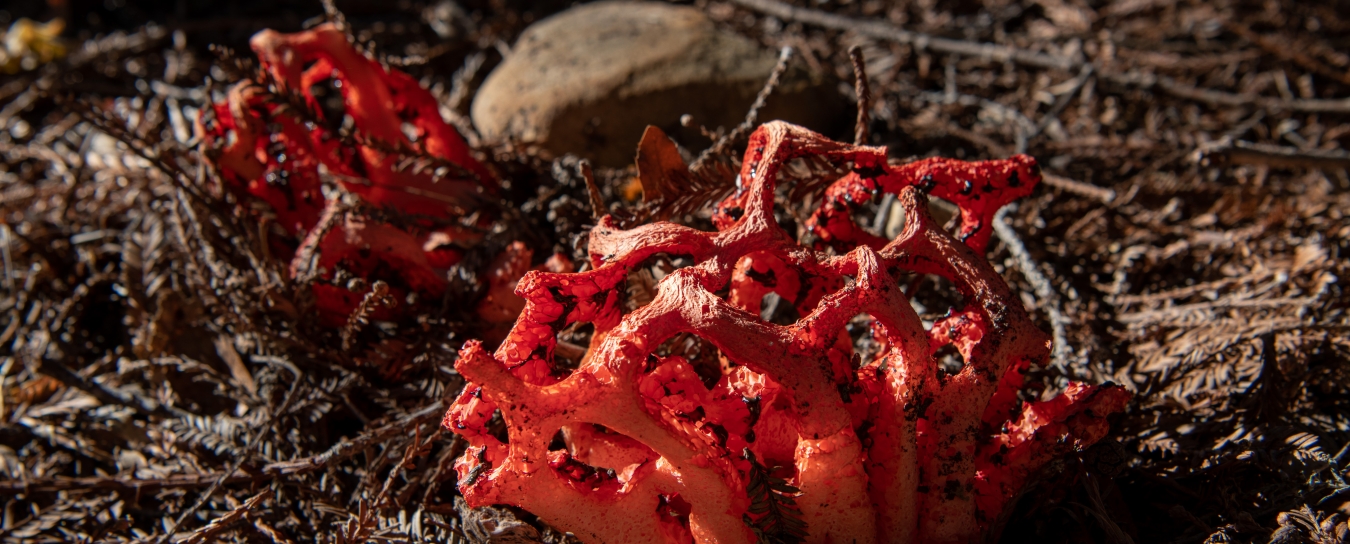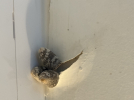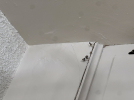
Fungi
Our fungi identifications are courtesy of fungi expert Bob Cummings, who teaches in the Botany Department at Santa Barbara City College in the Biological Sciences. Before you ask, check to see if your fungus has been identified below.
- Anthropology
- Rocks & Fossils
- Invertebrates
- Vertebrates
- Botany
- Astronomy
- Fungi
- General
- Recently Asked
Apartment Mushroom
We came into our kitchen one day to find these bad boys popping through a crack in our cabinetry trim. Then a friend of ours in the building found these growing straight through the paint on the wall above her shower.
What kind of mushroom is this and how dangerous might it be?


Curator Response
Hi Kevin,
We direct all our fungal queries to Bob Cummings, who teaches in the Botany Department at Santa Barbara City College in the Biological Sciences. Here's his response:
"This is one of the 'Inky Cap' mushrooms, formerly placed in the genus Coprinus. Coprinus has been broken up into several new genera recently, based on molecular data, so this one would probably key out to a species of Coprinellus, possibly C. flocculosus, or C. domesticus. Definitive identification is based on microscopic and molecular details.
Coprinellus spp. are wood rotting, saprotrophic fungi, able to metabolize the cellulose and lignin components of wood. They are not 'dry rot fungi'; that term is used for very aggressive home-wrecking species such as Serpula lacrymans, which only needs wet wood to start, but can then can proliferate into dry areas and destroy the entire structure rapidly and efficiently. Rather, Coprinellus is an opportunist. It does need wet wood to get started, but it cannot progress into dry areas; the damage is confined to wet wood. The American Softwood Lumber Industry published standard for construction grade lumber is a maximum moisture content of 19%. When the structural wood of houses is accidentally allowed to get wet for extended periods, as when floods or leaking windows or pipes occur, these fungi are able to gain a foothold. The treatment is to identify and fix the problem that allowed the area to get wet, and to open up the area and repair the structural damage.
Coprinellus mushrooms themselves are non-toxic and otherwise not dangerous to health, there is no need to evacuate, quarantine or sterilize the building. However, Coprinellus produces wind dispersed spores that, like the spores of other fungi and the pollen of many plants, may cause mild discomfort in sensitive individuals. One relatively minor problem is the inky black mess these mushrooms make as they deliquesce in age. However, the area where the mushrooms appeared will likely have to be removed and replaced anyway, making clean up a moot point.
To be clear, Coprinellus is unrelated to the infamous and dreaded 'black mold' Stachybotrys spp. (which belongs to a phylum of fungi that does not produce mushroom fruiting bodies). Stachybotrys has been reportedly responsible for serious respiratory problems in some individuals, so is cause for serious concern.
The appearance of Inky Cap mushrooms emerging from baseboards and walls in houses is not uncommon. It is understandably frightening and reveals that the unseen, underlying structural lumber is wet and decaying. Unless the source of moisture is eliminated and the affected wood removed and/or mitigated, the fungus will no doubt eventually cause serious structural damage to the building."


